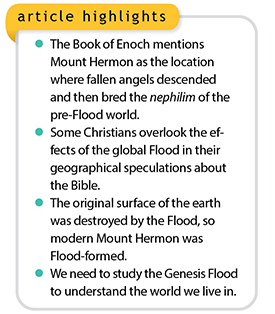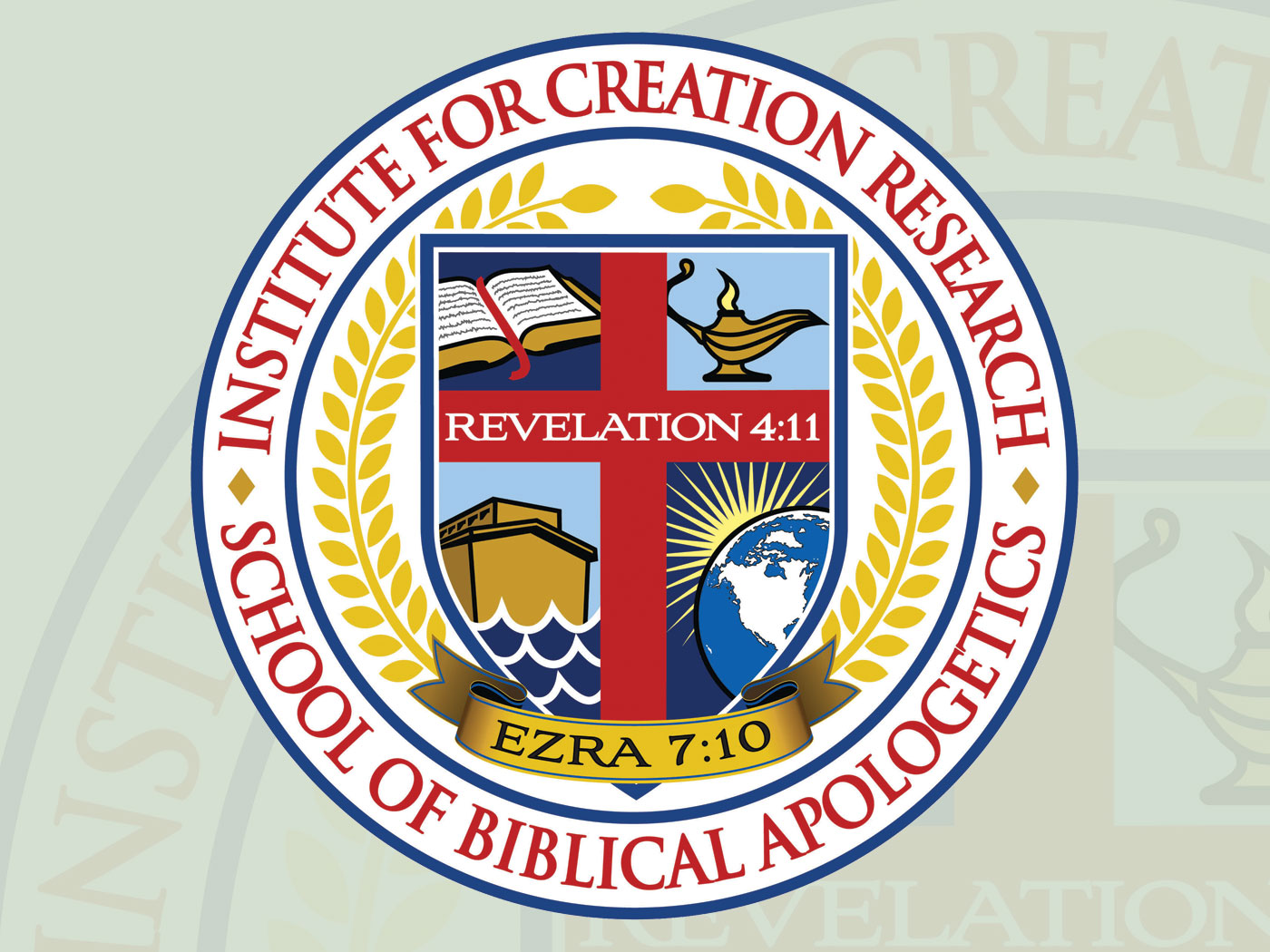
Mount Hermon is a topic that seems to pop up increasingly these days, especially among Christian prophecy and end-times teachers. Much of this interest has to do with intriguing discussions surrounding Genesis 6:1-4 and the topic of giants and nephilim. This is primarily due to a connection between these Scriptures and the apocryphal Book of Enoch, which contains a more detailed nephilim account and mentions Mount Hermon as a central part of the story.
According to the Book of Enoch, 200 fallen angels (watchers) descended from the heavenly realm to the top of Mount Hermon. They then began nefarious activity with human women, resulting in the offspring of giants often referred to as the nephilim (meaning “fallen ones” in Hebrew). Therefore, many Christians like to point to the present-day Mount Hermon as the historical site of this angelic intrusion.
Regardless of where one stands on the controversial issue of nephilim, there’s one geographical aspect of the whole debate that’s decidedly in error. In fact, this is a common type of historical error some Christians make in other geographical speculations concerning the Bible. Specifically, it’s the important issue of the Genesis Flood and its relation to the current global landscape. The popular but errant idea that the present-day Mount Hermon is the same geological feature that existed in the pre-Flood world serves as an important teaching point.
Present-day Mount Hermon is actually a mountain cluster at the southern end of the Anti-Lebanon mountain range. It’s 2,814 meters (9,232 feet) tall at its summit and straddles the border between Syria and Lebanon, with the highest point being in Syria. The southern slopes of Mount Hermon extend to the Israeli-occupied Golan Heights, where a ski resort is located.

Mount Hermon is composed of global Flood sediments that were deposited close to the high point of the floodwaters (Jurassic and Cretaceous), corresponding to what stratigraphic geologists call the Zuni Megasequence.1,2 There’s also evidence of volcanic activity and magma flows that occurred after initial uplift of the mountain during the Flood year, dated by conventional geologists as Early Cretaceous.1 The final uplift of Mount Hermon ensued as the floodwaters were receding (Neogene), forming the mountains we see today.
In the creation model, the global Flood was a progressive and violent ebb-and-flow cataclysm that occurred over a year-long period. Thus, given the fact that today’s Mount Hermon is composed of Flood-formed rocks that were deposited and/or erupted just prior to Day 150, assumptions that it’s a remnant of the pre-Flood world are in error.
The world that existed before the Flood was totally destroyed, and the present-day (post-Flood) Mount Hermon, which is mostly composed of sedimentary Flood rock, cannot be the pre-Flood Mount Hermon alluded to in the Book of Enoch. If there actually were a pre-Flood Mount Hermon, we have no idea where it was located on the pre-Flood supercontinent Pangaea before Pangaea split apart during the Flood into the present global continent configuration.
Christian philosophers and theologians would do well to include the research done by creation scientists that not only fits closely with a literal interpretation of Genesis but also empirically supports such key events as the global Flood. The total global destruction of the pre-Flood world was such an important topic that the apostle Peter said, “By which the world that then existed perished, being flooded with water” (2 Peter 3:6). The Greek verb used for perished in this verse (apollymi) means to be utterly destroyed and completely lost, and its historical past tense (aorist) indicates a completed action.
Thus, both geological and biblical evidence show Mount Hermon was Flood-formed.
References
- Wilson, M. et al. 2000. Early Cretaceous magmatism of Mount Hermon, Northern Israel. Contributions to Mineralogy and Petrology 139: 54-67.
- Clarey, T. 2020. Carved in Stone: Geological Evidence of the Worldwide Flood. Dallas, TX: Institute for Creation Research.
* Dr. Tomkins is Director of Research at the Institute for Creation Research and earned his Ph.D. in genetics from Clemson University.
















